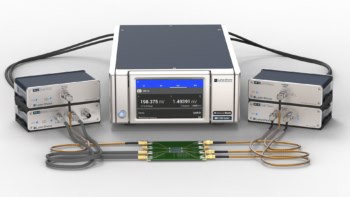Available to watch now, The Electrochemical Society, in partnership with the Royal Society of Chemistry and Hiden Analytical, explores the physical principles of electrochemical acoustic interrogation
Want to learn more on this subject?

Although classic battery engineering is firmly rooted in chemical engineering and chemistry, the last decade has seen a significant increase in research on mechanical and chemo-mechanical properties of batteries for both reversible and irreversible behaviours. Characterization of structural evolution and degradation on a cycle and calendar basis is necessary to increase the lifetime of high-energy density cells while decreasing cost, and a range a chemistry-specific methods have been applied to probe chemical mechanical couplings. In theory, and increasingly in practice, acoustic interrogation reveals mechanical correlations across any chemistry and cell form factor due to its exploitation of the required mass balances for cell operation. Beyond being generalizable to all battery chemistries, acoustic methods are scalable, high rate and readily operando: sub-ms acquisition times are possible on full cells using desktop equipment.
In this webinar, the physical principles of electrochemical acoustic interrogation will be introduced, and example experiments will be described for lithium ion, lithium metal, and zinc alkaline systems. Statistical correlations of acoustic behaviour and “battery state” will be discussed (state of charge, state of power, state of safety, state of health), as will newer studies on structure and property extraction, with emphasis on degradation due to thermal and fast-charge events. Current spatial and temporal limits will be discussed, as will asymptotic capabilities.
Want to learn more on this subject?
 Daniel Steingart is the Stanley Thompson Associate Professor of Chemical Metallurgy and Chemical Engineering, and the co-director of the Columbia Electrochemical Energy Center. His group studies the systematic behaviours of material deposition, conversion and dissolution in electrochemical reactors with a focus on energy-storage devices.
Daniel Steingart is the Stanley Thompson Associate Professor of Chemical Metallurgy and Chemical Engineering, and the co-director of the Columbia Electrochemical Energy Center. His group studies the systematic behaviours of material deposition, conversion and dissolution in electrochemical reactors with a focus on energy-storage devices.
His current research looks to exploit traditional failure mechanisms and interactions in batteries, turning unwanted behaviours into beneficial mechanisms. His efforts in this area over the last decade have been adopted by various industries and have led directly or indirectly to five electrochemical energy-related start-up companies, the latest being Feasible, an effort dedicated to exploiting the inherent acoustic responses of closed electrochemical systems.
Steingart joined Columbia Engineering in 2019 from Princeton University where he was an associate professor in the department of mechanical and aerospace engineering and the Andlinger Center for Energy and the Environment. Earlier, he was an assistant professor in chemical engineering at the City College of the City University of New York. Even earlier, he was an engineer at two energy-related start-ups. He received his PhD from the University of California, Berkeley, in 2006.






